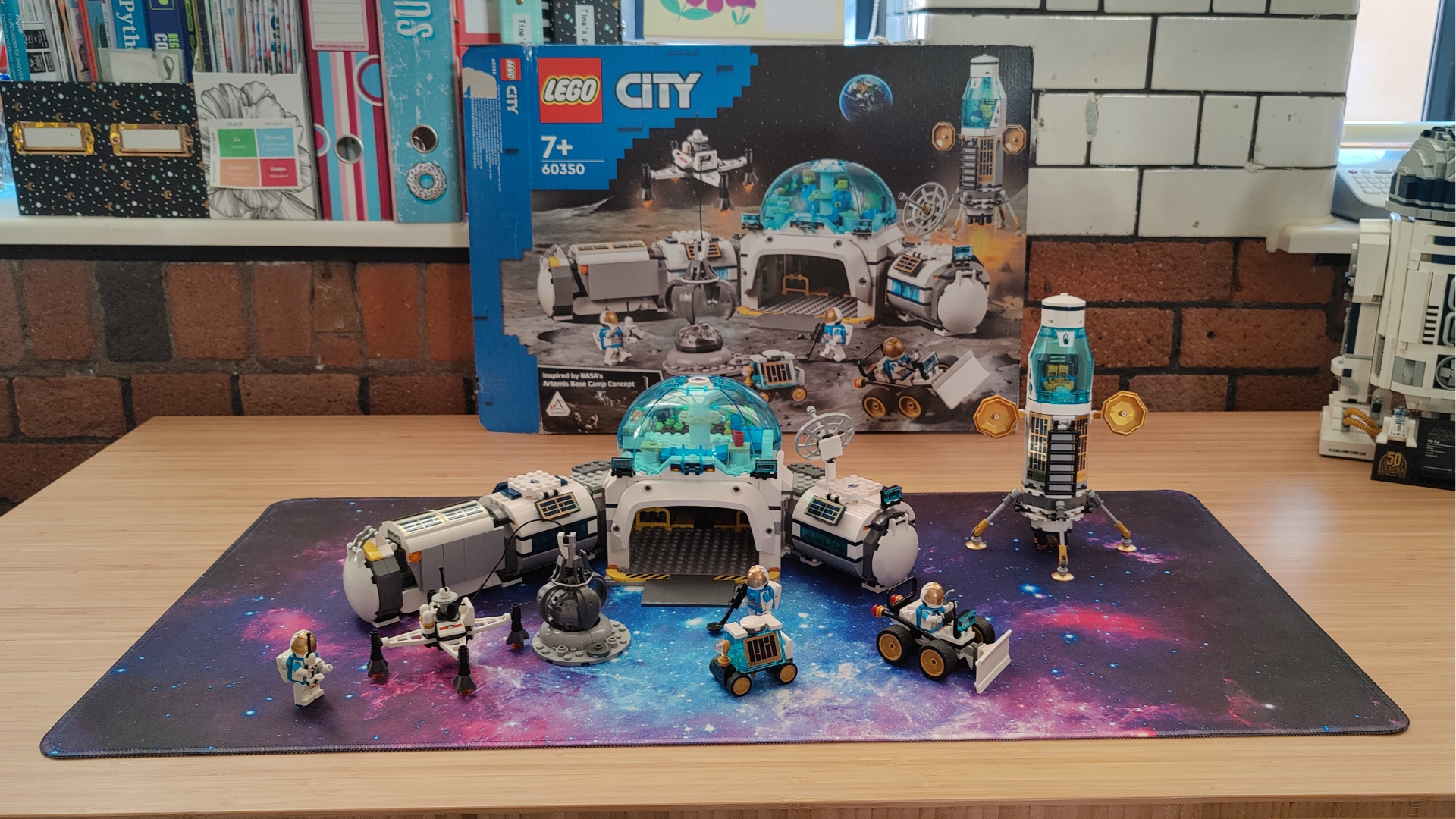Space Verdict
The Lego Lunar Research Base is a fantastic playset for kids who are curious about the wonders of space exploration. It has loads of moving parts and neat details, while also looking great as a display piece for adults too.
Pros
- +
Huge variety
- +
Excellent for play with moving parts
- +
Great display piece
Cons
- -
Loads of stickers
- -
Quite large, so you'd need a big display/storage space for it
Why you can trust Space.com
Price: $129.99/£89.99
Model number: 60350
Number of pieces: 786
Dimensions: Approximately 5 inches (13 cm) high, 15.5 inches (40 cm) wide and 10 inches (25 cm) deep.
Recommended age: 7+
NASA might have plans in place for a moon base, but Lego has beaten them to the punch with the recently released Lego Lunar Research Base. Released alongside three other kits as part of Lego’s SLS Artemis-inspired range, the Lunar Research Base kit is filled with authentic details based on real space vehicles and equipment such as the VIPER lunar rover.
With a recommended age of 7+, the Lego Lunar Research Base is definitely aimed at kids, rather than adult collectors, but there is plenty for both groups to enjoy here. It’s the second most expensive Lego Space set with an MSRP of $129.99, which does make it one of the more expensive Lego City kits on the market, but you do get a lot of bang for your buck in terms of playability.
If you're interested in checking out the rest of the Artemis-inspired Lego sets, head over to our best Lego space sets page for a rundown of them all, alongside other NASA and space inspired Lego kits. We've also got our Lego space deals page to help you save money on intergalactic Lego too.
But if the Lego Lunar Research Base sounds like your kind of thing, then read on for our full review. Is it worth the giant leap for your wallet, or should you take one small step back and out of the Lego store?
Lego Lunar Research Base: Build
- 786 pieces
- Diverse and interesting build
- Loads of stickers
The Lego Lunar Research Base is a fun and diverse build thanks to the various different sections. The base itself takes up the majority of the build time, but there is also the lunar lander, moon buggy, VIPER-inspired lunar rover, Skycrane drone, asteroid impact crater, and astronauts to put together too. In total, we’d say it took us a couple of hours to build the whole set, but the various components make it easy to segment out over a few different build sessions if you want to get the most out of the experience with your kids. There are even separate instruction books for each section.
Following the instructions provided, you’ll start out assembling the astronauts, the crashed asteroid site, and the smaller vehicles - the drone (which has a working winch and grabber), moon buggy, and equipment trailer. There are all quick and easy to do, giving your kids a quick sense of accomplishment and something to play with. From there, you’ll move on the lunar lander rocket. This section of the build is fairly simple, though there are a lot of stickers to attach here. The lander itself has a cool moving flame that descends out of the rocket when you lift it off the ground.
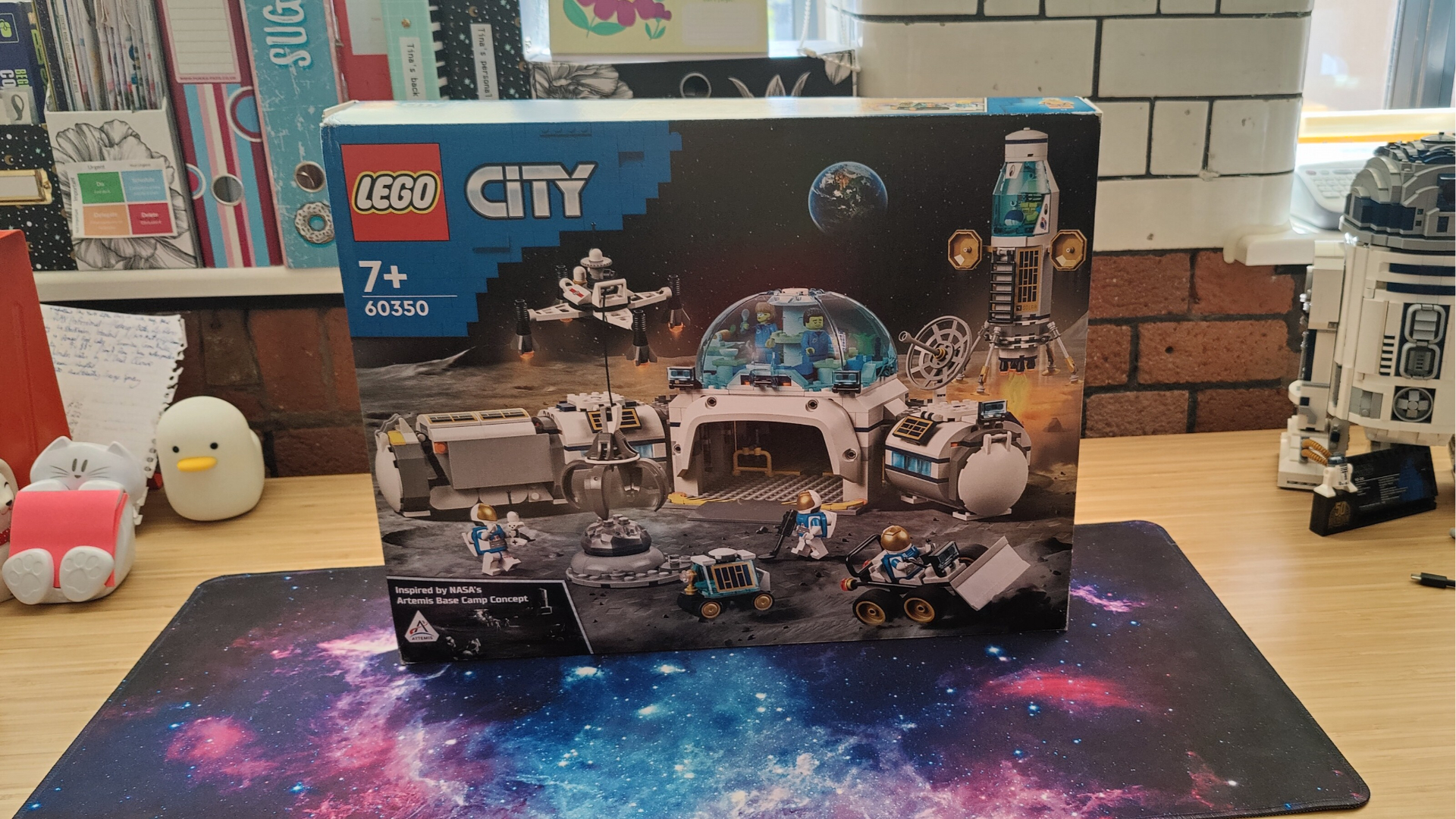
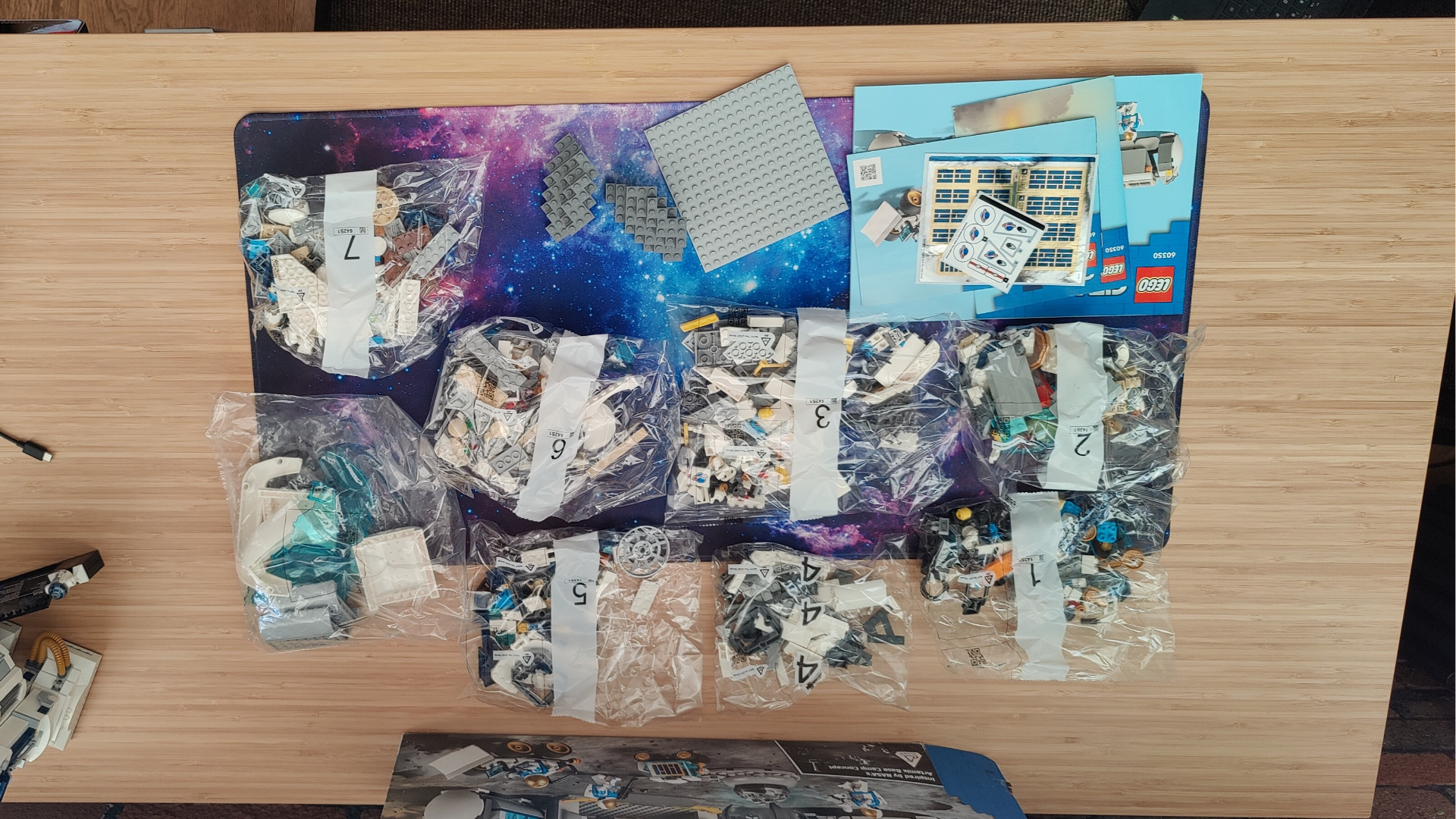
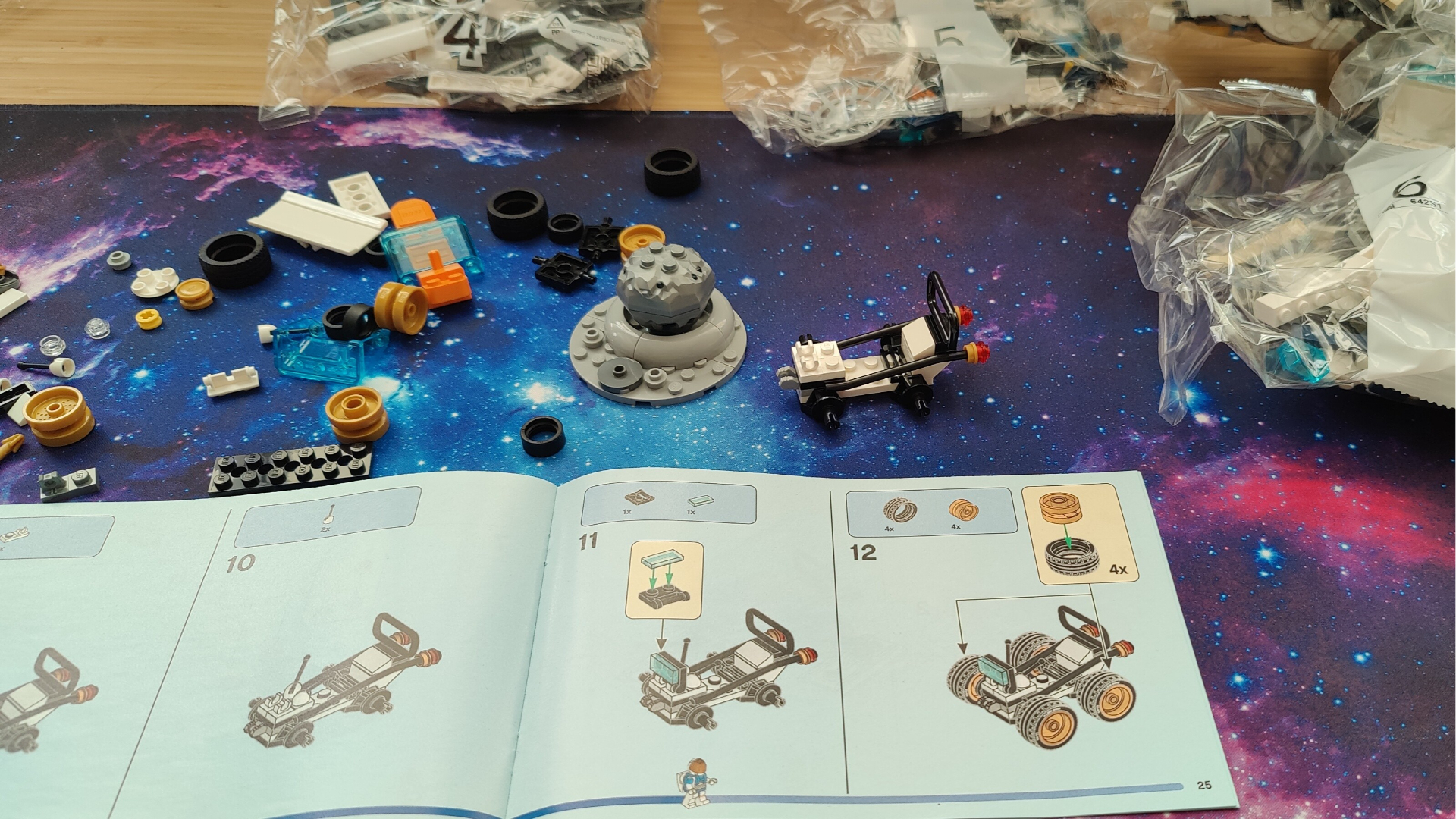
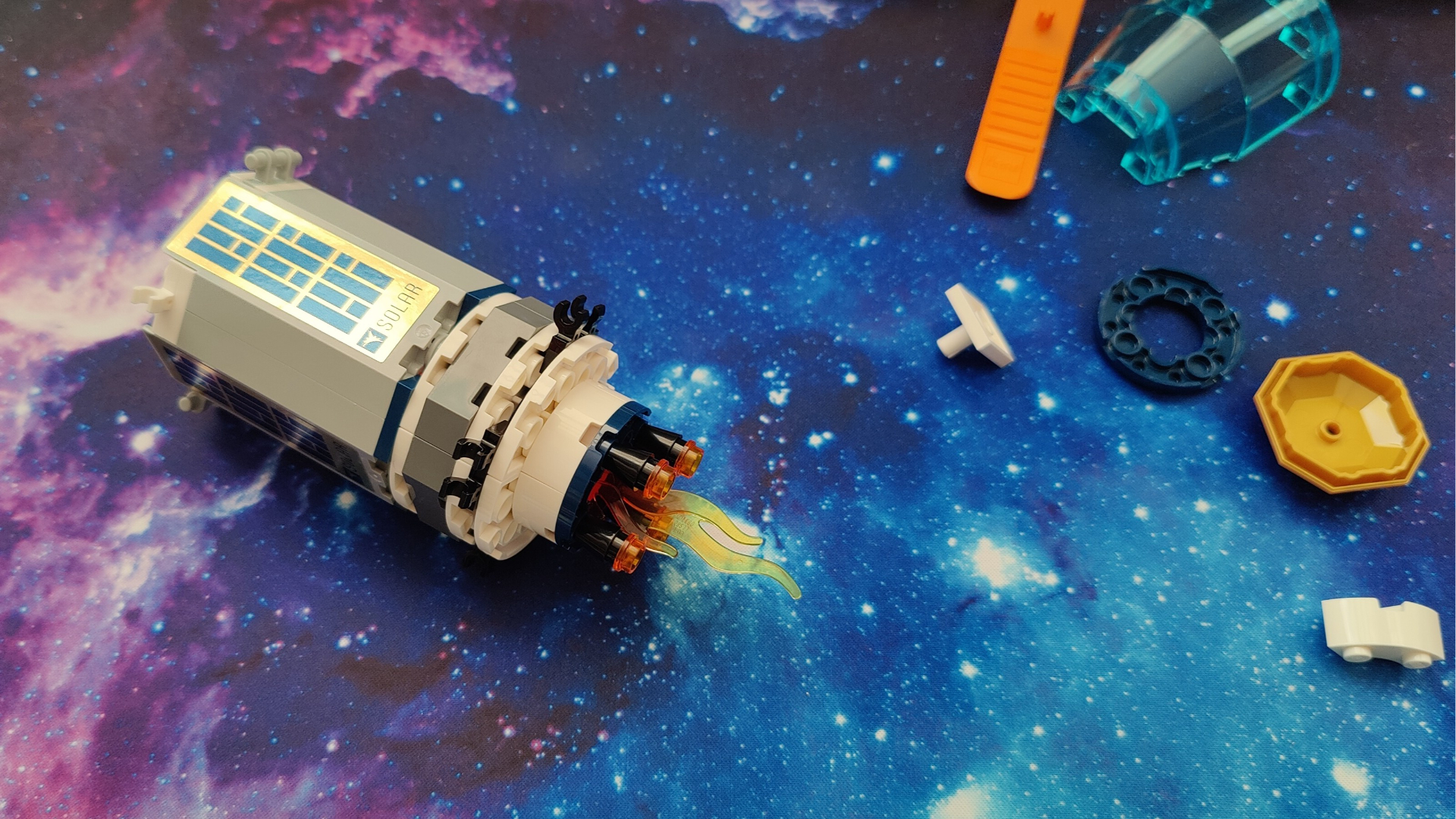
The lion’s share of the build is the moonbase itself, and we were impressed at the amount of variety in the build here. The two offshoots from the main structure are vastly different, so you don’t end up with too much repetition as you’re putting it together. Once the two side labs are done and attached to the vehicle garage, you get to finish with the best section as you put together the transparent habitat module. This section looks fantastic with loads of vibrant colors from the plants and crew quarters in there. The dome is split into four hinged pieces too, so you can retract it and play in that space without needing to detach the roof.
One downside to the kit is the prevalence of the dreaded stickers - it’s understandable that they were used in this case though, as they’re basically all shiny metallic effects, which can’t be replicated with printed bricks. Stil, it can be a pain to line up properly, and this is something we’d recommend adults supervise, or even just do to help avoid mistakes.
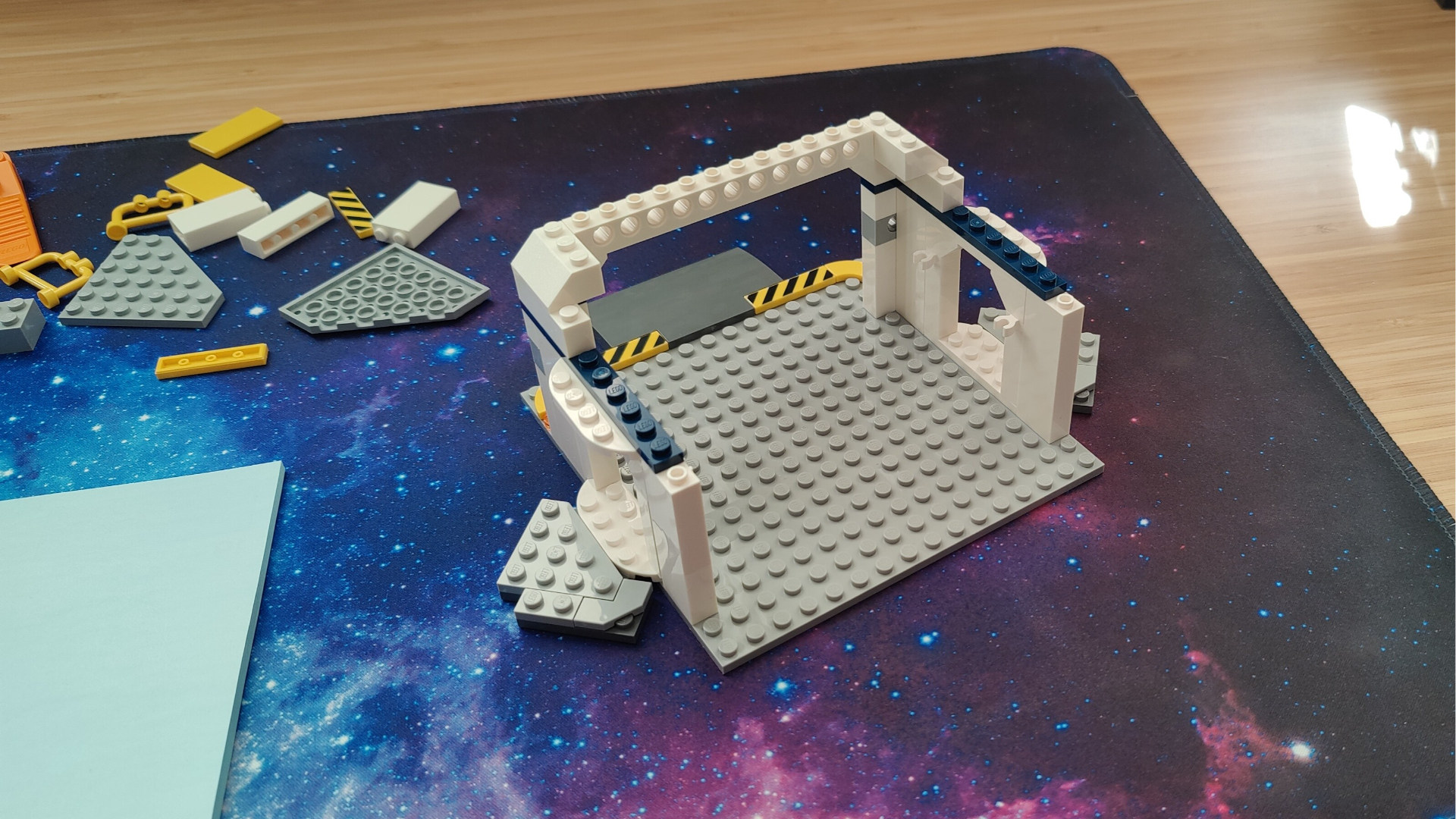
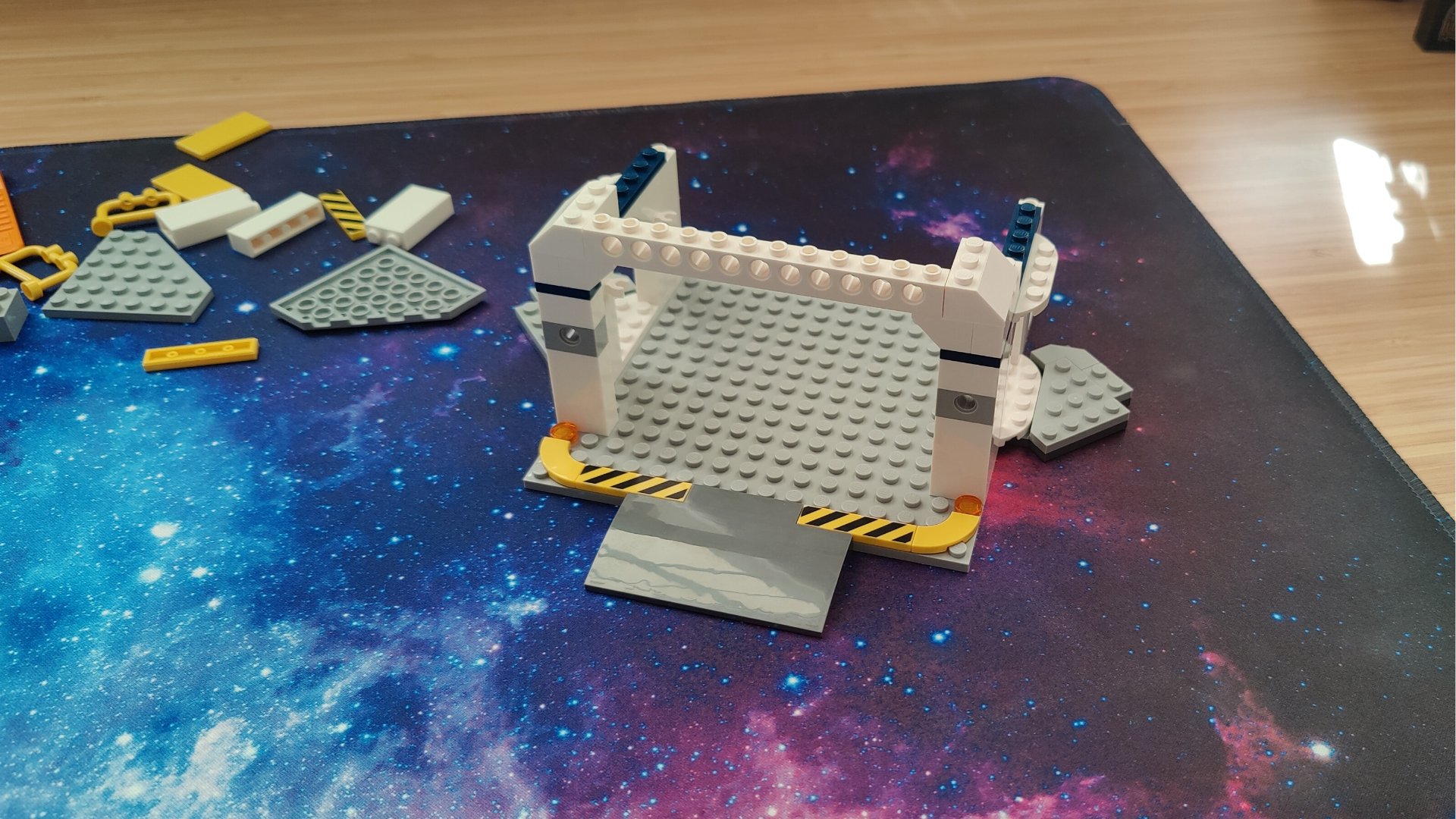
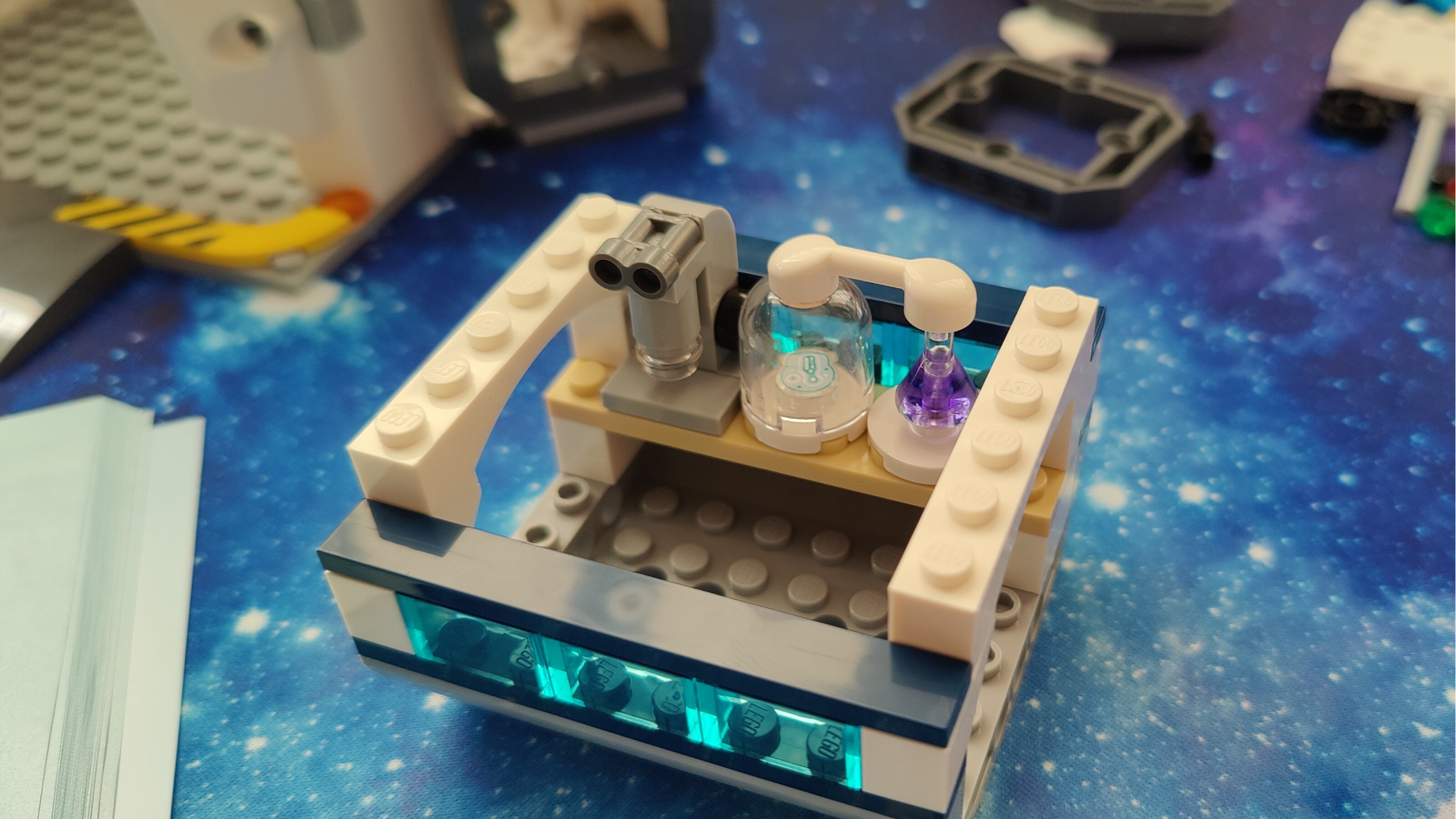
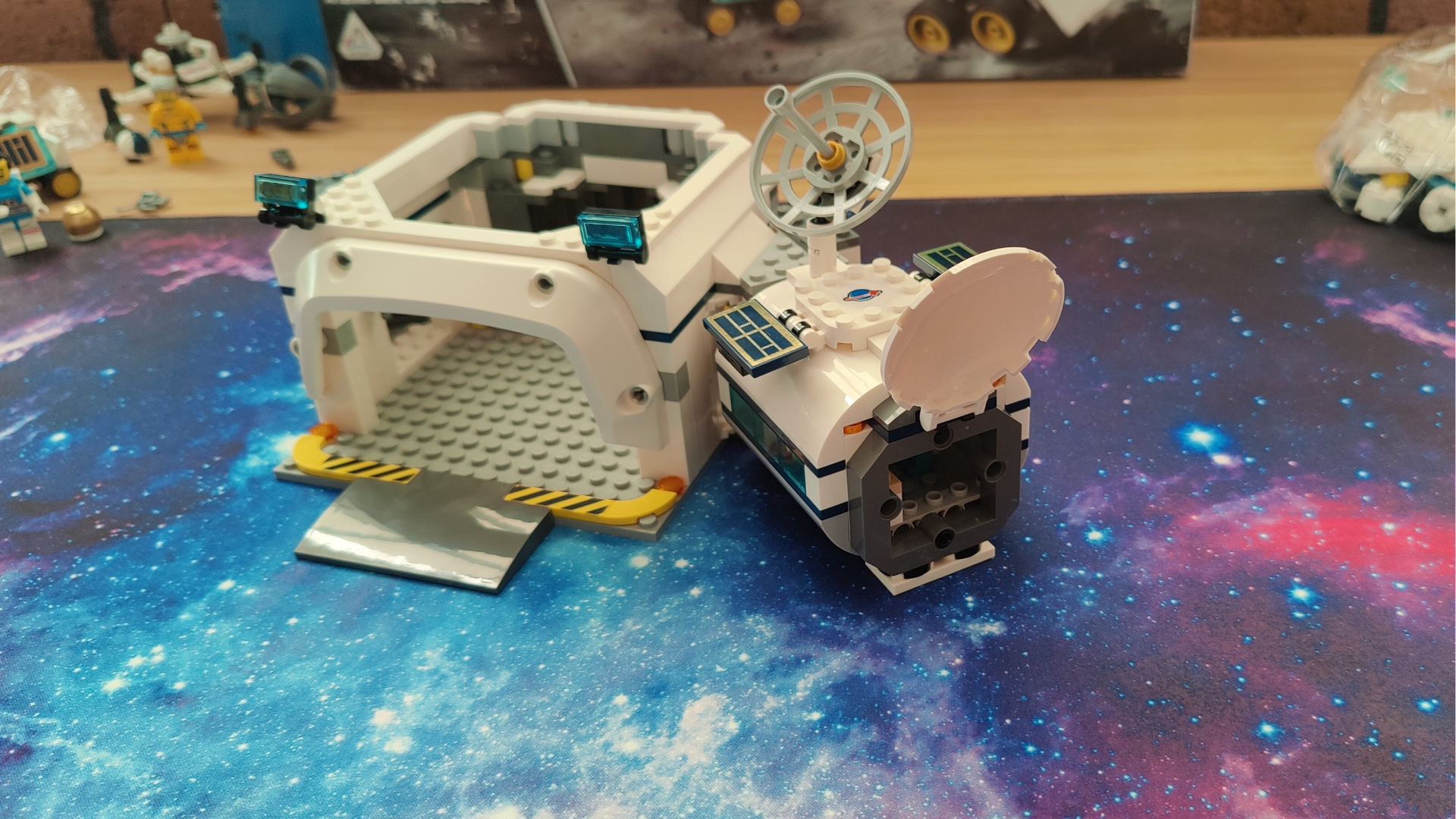
Lego Lunar Research Base: Design
- Impressively large playset
- Loads of variation and play opportunities
Once it’s completed, the Lego Lunar Research Base is an impressive kit, both in terms of size and design. There are loads of cool little details throughout the build - we love the tiny microscope and experiment in the science lab, but there’s also the tool racks in the vehicle hanger and the colorful habitat module to draw the eye too. This is definitely a playset first and foremost, but it also works nicely as a display piece, especially when paired with the Lunar Roving Vehicle which Lego sells separately.
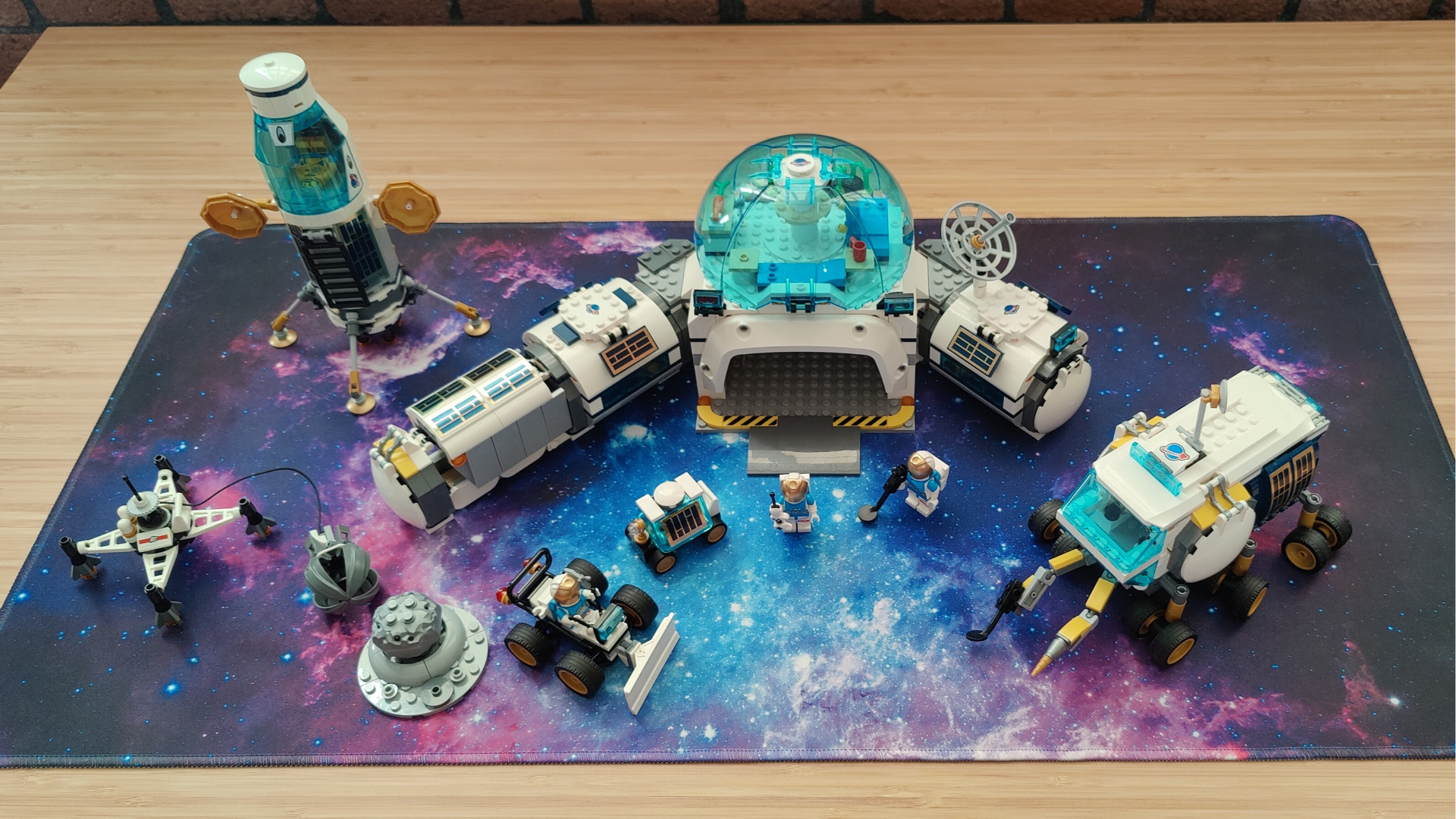
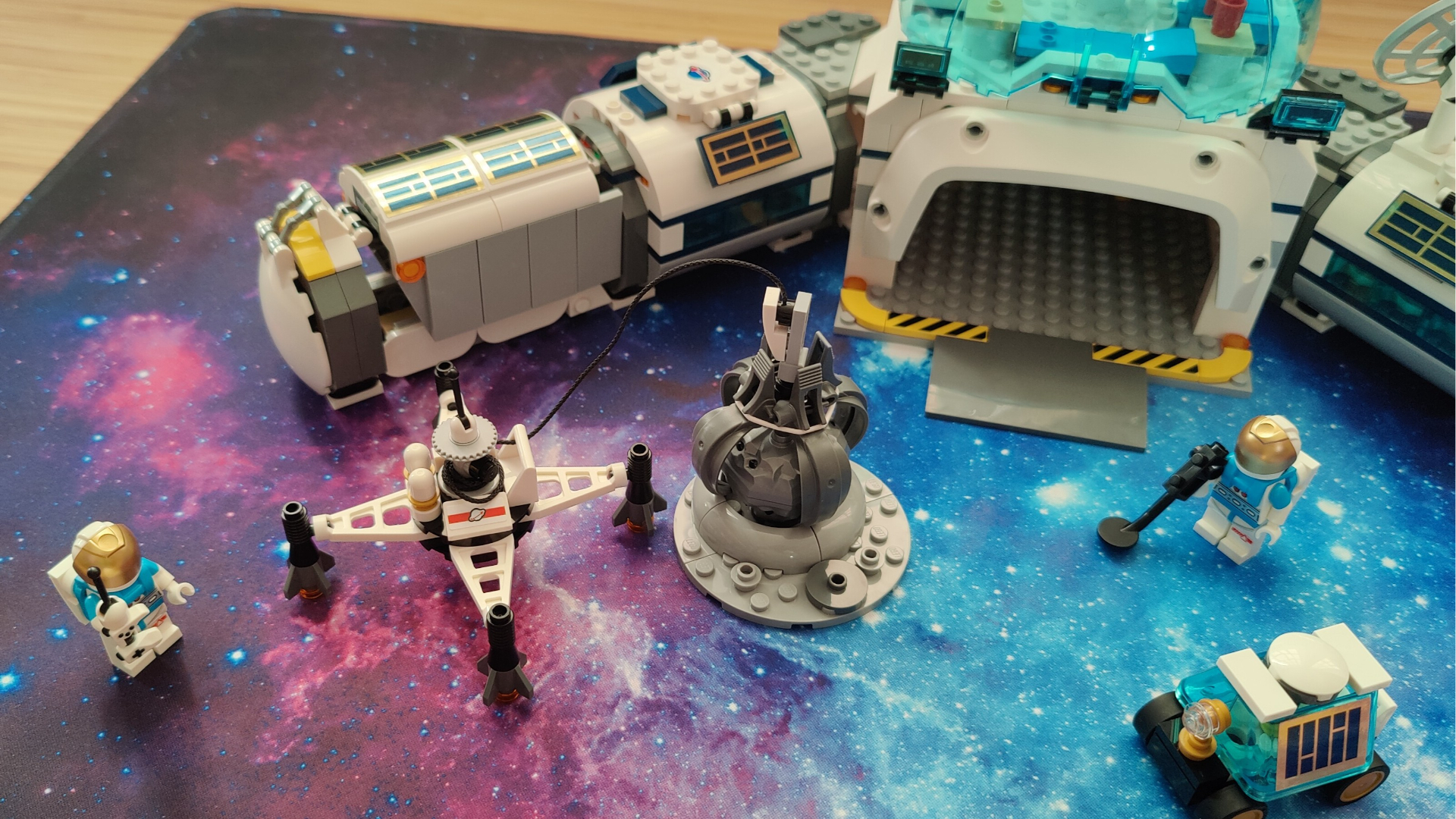
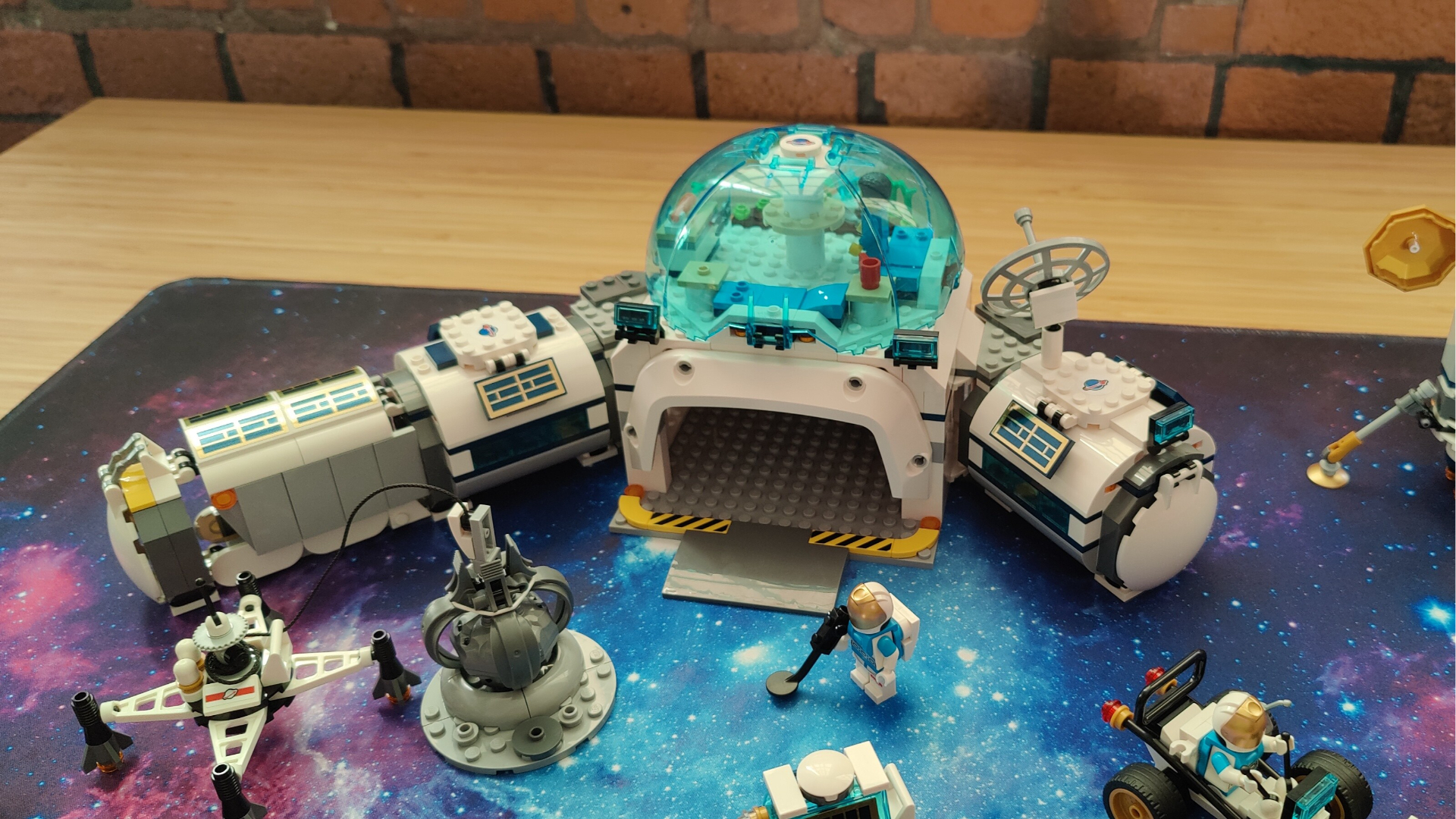
If you are using it as a playset though, it’s very stocked with moving parts and different play spaces. The habitat module has a folding dome design that means you can play in the top section without needing to detach it, but you can also lift the entire module off the get to the vehicle garage below. Likewise, the roof sections of the labs on either side can also easily be detached and reattached as needed.
Outside of the main structure, the buggy and rover both have working wheels for some lunar expeditions, and the Lunar lander has an opening cockpit so you can access the minifigures inside with ease. Our favorite feature has to be the Skydrone though - it has a working winch and an elastic band-powered grabbing arm that is perfect for picking up and moving the crashed meteorite.
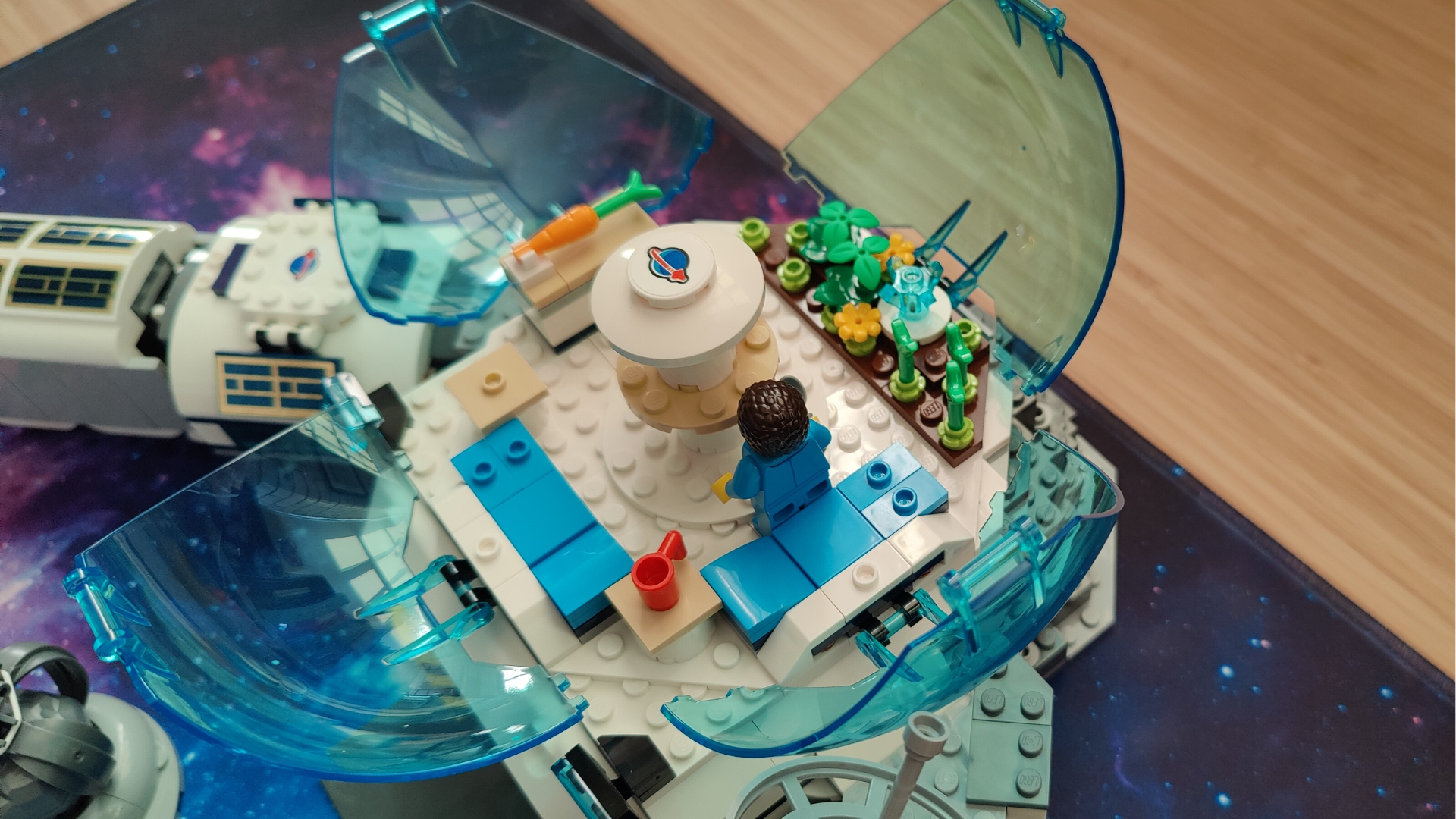
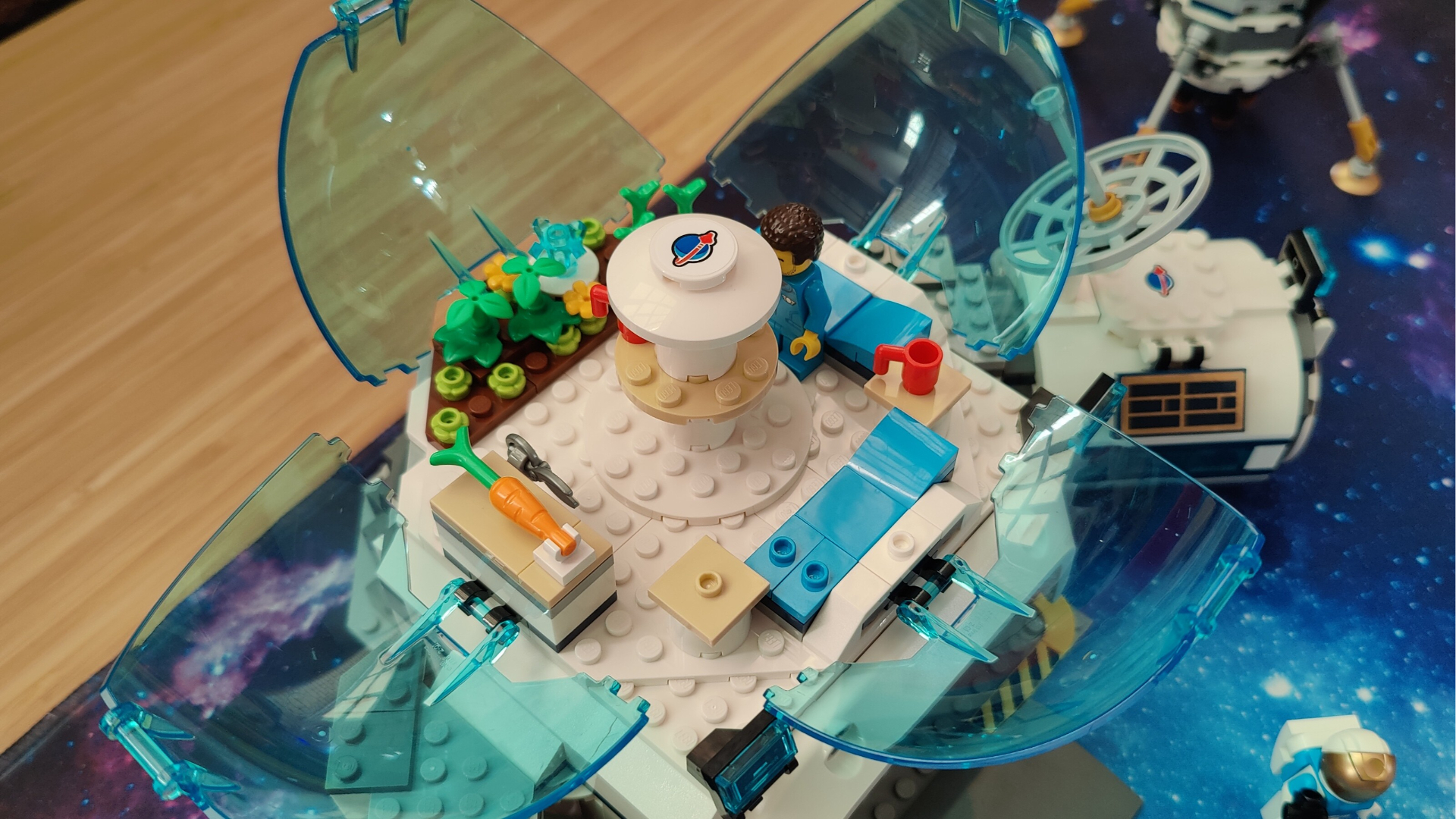
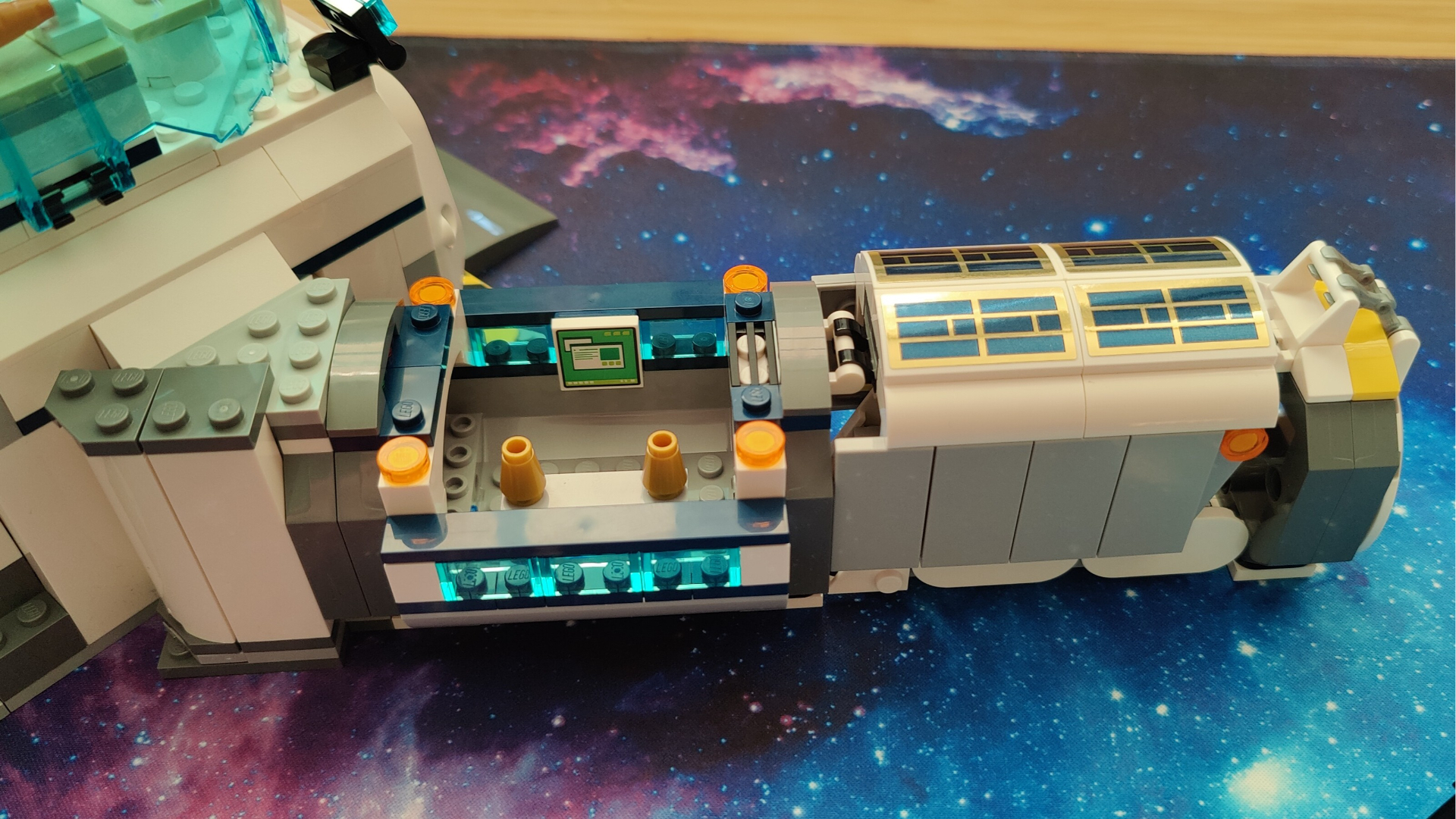
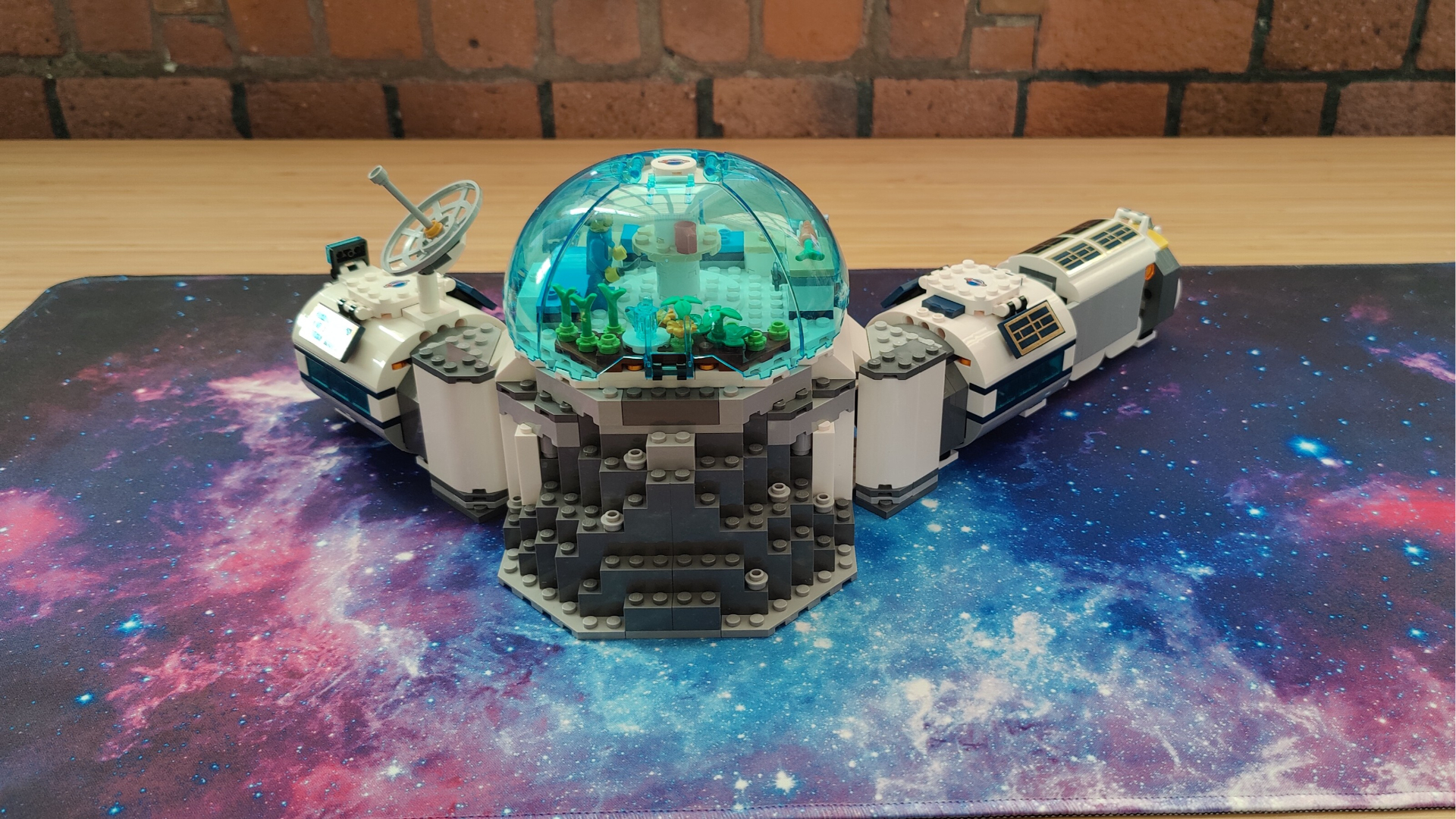
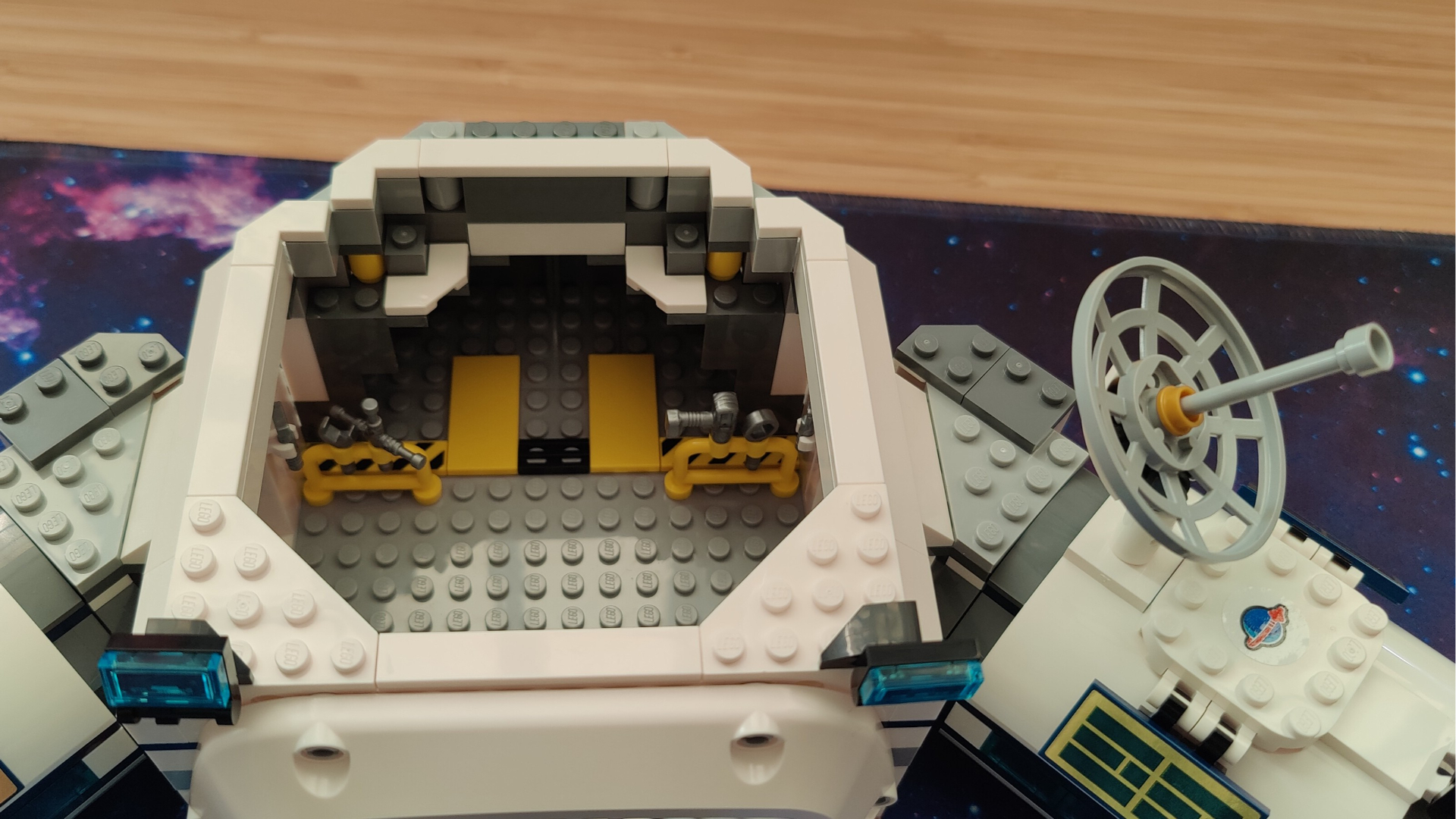
The Lego Lunar Research Base comes with six minifigures - three astronauts in space suits, two researchers, and the pilot of the lunar module. The spacesuit minifigures have helmeted and non-helmeted head options too.
If we have one complaint, the landing struts on the Lunar Lander are a bit flimsy, and we struggled to get them all looking evenly distributed. It’s a minor concern, but it does leave the lander feeling a bit flimsier than the rest of the kit.
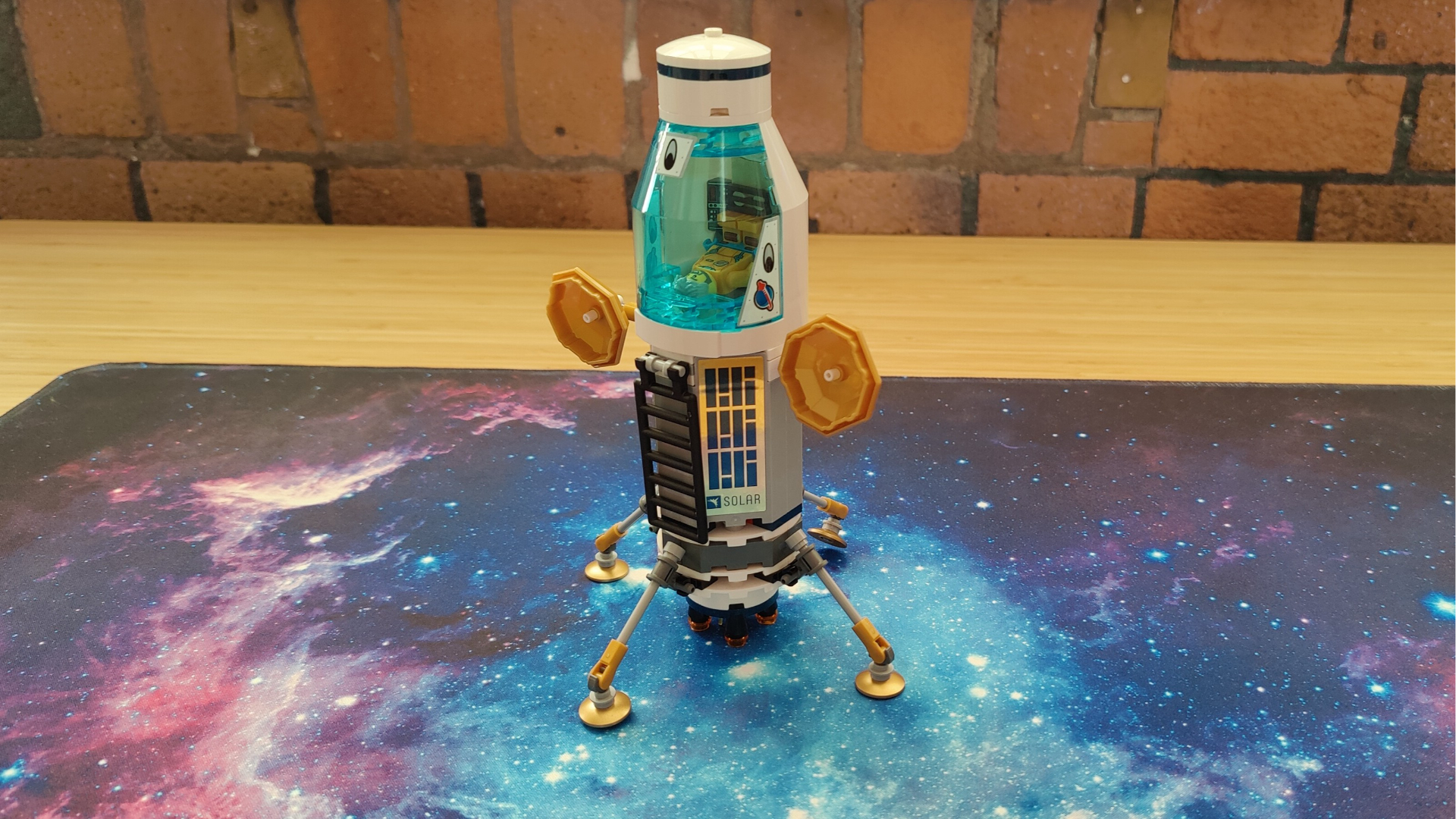
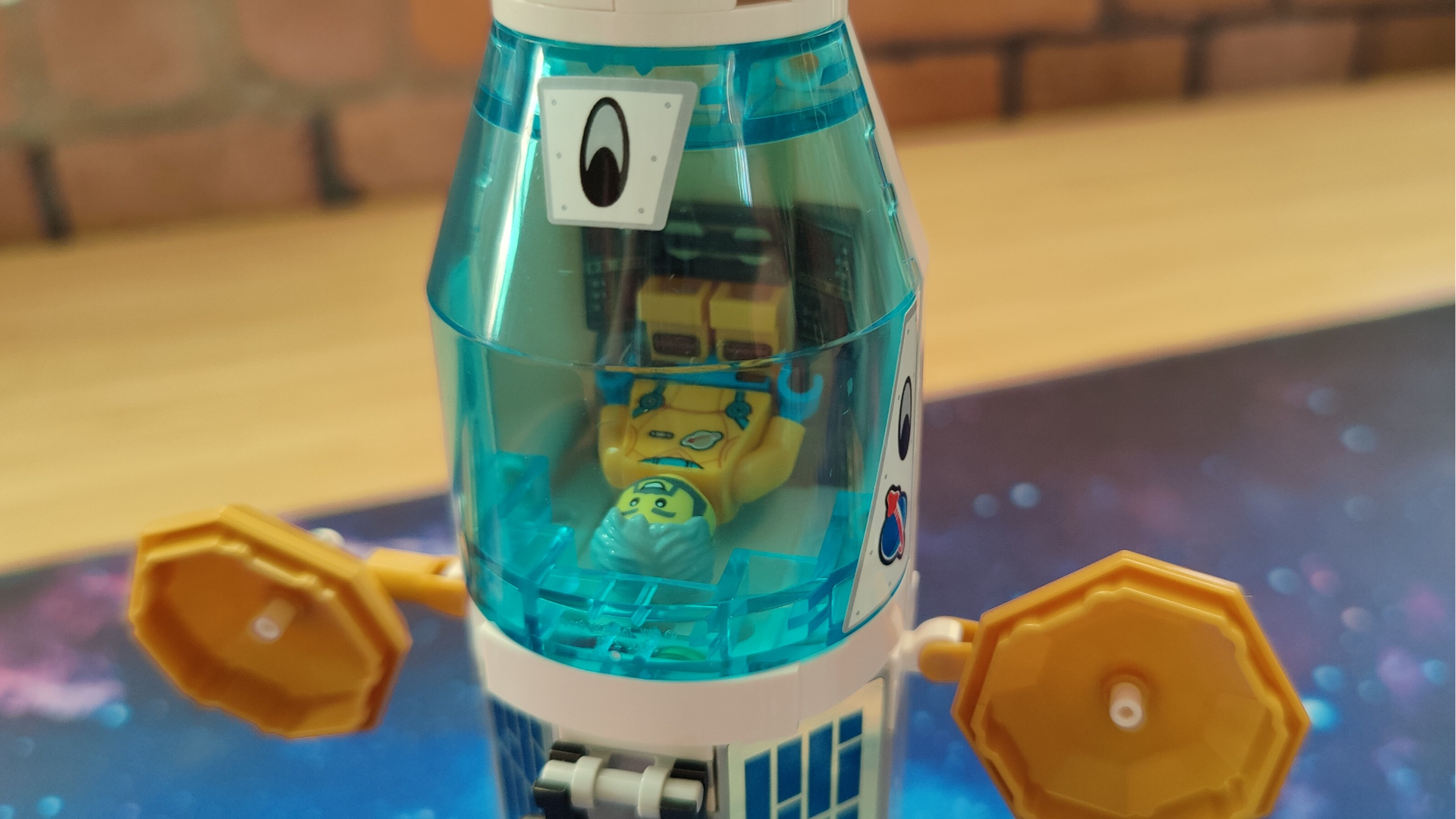
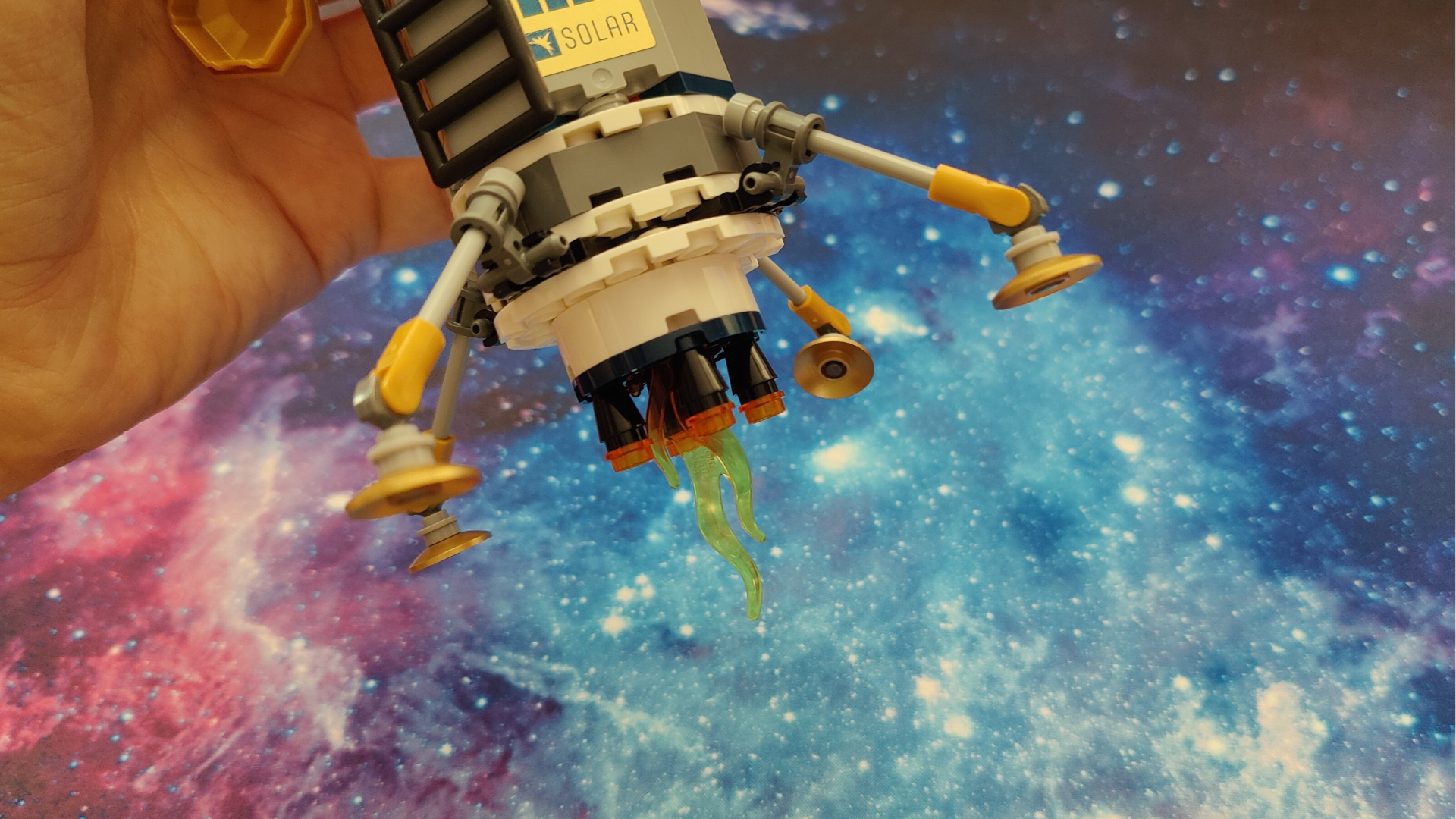
Should you buy the Lego Lunar Research Base?
This is a Lego set designed for kids first and foremost, so if you’re young ones are space fans (or you’re looking to get them interested in the final frontier), then we can highly recommend the Lego Lunar Research Base. It’s great fun to build, with diverse sections so you never get bored repeating the same steps and when it’s done, it has tons of playability too. Just make sure you’re around to help with the stickers if you want to avoid any issues.
If you’re an adult looking for a display piece, then the Lego Lunar Research Base is still a decent choice. It’s not quite as sleek looking as the Discovery Shuttle or ISS kits, but it will still look fantastic on a shelf next to some other space-themed kits.
Other Lego space sets to consider
If you want to complete the Artemis-inspired collection, there are a few kits you can consider. As we mentioned in the review, this kit pairs perfectly with the Lego Lunar Roving Vehicle which you can buy for $39.99 - not too expensive for an add-on to this kit. Alongside that, there is also the Lego Lunar Space Station kit which costs $79.99.
The star of the Artemis show though, is the Lego Rocket Launch Center. This massive kit includes an rocket inspired by NASA's Artemis 1 SLS rocket, along with a launch pad and mini launch control center. It's the most expensive of the sets in the range, costing $159.99.
If you're looking for something that's meant more for display than play, there are also a bunch of NASA kits to check out. The Lego Space Shuttle Discovery is a seriously impressive kit, with an equally impressive price tag of $199.99. There is also the Lego International Space Station which comes in at $69.99.
Join our Space Forums to keep talking space on the latest missions, night sky and more! And if you have a news tip, correction or comment, let us know at: community@space.com.

Ian is the Entertainment Editor at Space.com, covering movies, TV series, and games in the space and sci-fi realms. He's a massive sci-fi nerd and has been writing about games and entertainment for over eight years, with articles on sites like Space, LiveScience, GamesRadar, and more. With a degree in biology, a PhD in chemistry, and his previous role at the Institute of Physics Publishing, Ian is taking a world tour through the different scientific disciplines.
